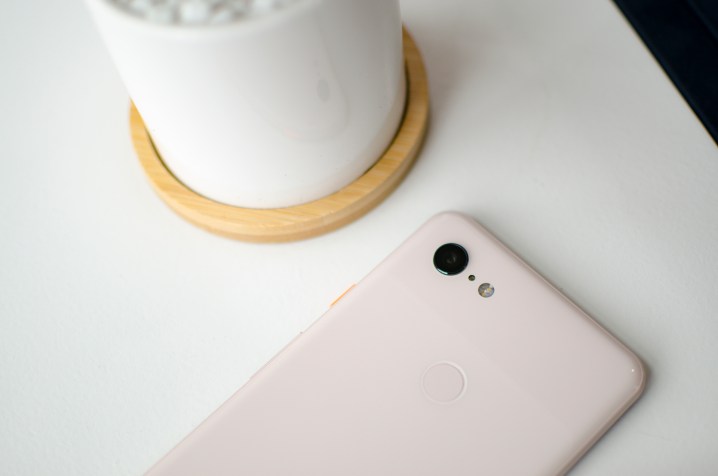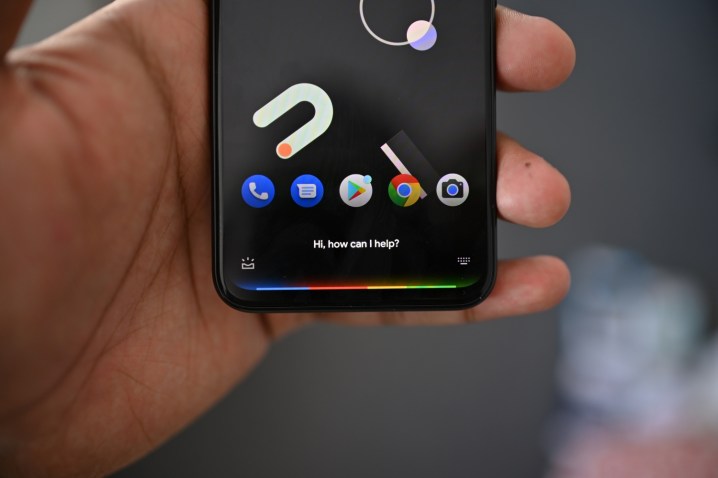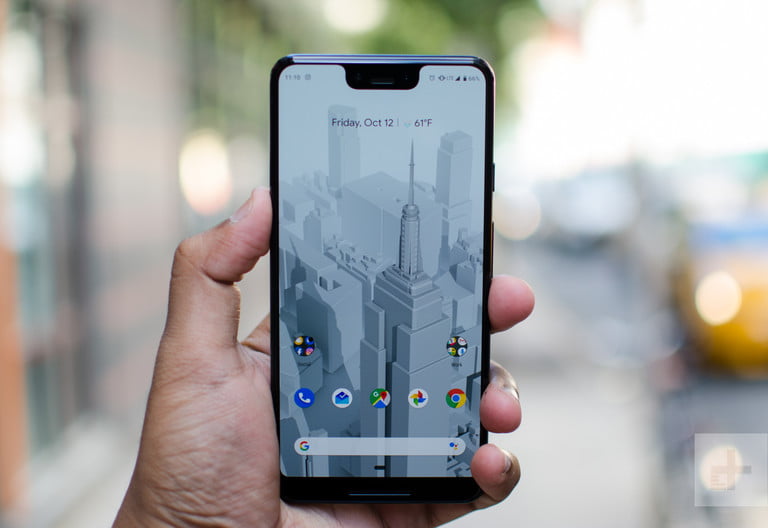As the architect of Android, it makes sense that you’d turn to Google for a truly transcendent Android phone. If you’re also looking for a big screen to meet your needs, then it’s the Pixel XL range you’ll need to look to. Google’s newest XL isn’t all that new at all, at this point: The company released the Pixel 4 XL in the fall of 2019, and didn’t refresh it with the release of the Pixel 5. But even though it’s an older phone, it’s still an excellent daily driver, thanks to its great design, an upgraded camera, and the latest Google Assistant innovations.
The Pixel 3 XL was discontinued as a result of the Pixel 4 XL’s launch, but plenty of people will still be using the older model. If you’re considering an upgrade to a bigger Pixel, is the Pixel 4 XL worth your hard-earned dough? We put the two phones head-to-head to answer these important questions.
Specs
| Google Pixel 4 XL | Google Pixel 3 XL | |
| Size | 160.4 × 75.1 × 8.2mm (6.3 × 2.9 × 0.3 inches) | 158 × 76.7 × 7.9mm (6.2 × 3 × 0.3 inches) |
| Weight | 193 grams (6.81 ounces) | 184 grams (6.49 ounces) |
| Screen size | 6.3-inch OLED | 6.3-inch P-OLED |
| Screen resolution | 3040 × 1440 pixels (537 pixels per inch) | 2960 × 1440 pixels (523 pixels per inch) |
| Operating system | Android 11 | Android 11 |
| Storage space | 64GB, 128GB | 64GB, 128GB |
| MicroSD card slot | No | No |
| Tap-to-pay services | Google Pay | Google Pay |
| Processor | Qualcomm Snapdragon 855 | Qualcomm Snapdragon 845 |
| RAM | 6GB | 4GB |
| Camera | Dual lens 12-megapixel “Dual-Pixel” lens and 16MP telephoto lens rear, 8MP front | Single-lens 12MP rear, dual 8MP lenses front |
| Video | 2160p at 60 frames per second, 1080p at 240 fps, 720p at 960 fps | 2160p at 30 fps, 1080p at 120 fps, 720p at at 240 fps |
| Bluetooth version | Bluetooth 5.0 | Bluetooth 5.0 |
| Ports | USB-C | USB-C |
| Fingerprint sensor | No, facial recognition instead | Yes, rear capacitive |
| Water resistance | IP68 | IP68 |
| Battery | 3,700mAh
USB Power Delivery 2.0 Qi wireless charging |
3,430mAh
USB Power Delivery 2.0 Qi wireless charging |
| App marketplace | Google Play Store | Google Play Store |
| Network support | T-Mobile, AT&T, Verizon, Sprint | T-Mobile, AT&T, Verizon, Sprint |
| Colors | Just Black, Clearly White, Oh So Orange | Just Black, Clearly White, Not Pink |
| Price | $630 | $300 |
| Buy from | Best Buy, Walmart, Amazon | Walmart, Amazon |
| Review score | 4 out of 5 stars | 4 out of 5 stars |
Performance, battery life, and charging

Performance has always been a high point of the Pixel range, thanks in large part to Google tying the software experience to top flagship hardware. While the Pixel 3 XL’s Snapdragon 845 is clearly inferior to the Pixel 4 XL’s Snapdragon 855 — and both are a few steps down from the Snapdragon 888 in the newest flagships, such as the Galaxy S21 line — it’s not far off enough that your phone will feel like it’s missing out. You’ll find both phones are fast and capable, and neither phone will have issues with the latest 3D games or intensive apps. That said, thanks to the 90Hz refresh rate, the Pixel 4 XL will undoubtedly feel the smoother of the two in real use. You’ll find the same storage options on both phones, but the Pixel 4 XL has more RAM, which may provide a small performance boost when jumping in and out of apps and games.
Unlike the Pixel 4, the Pixel 4 XL has a larger battery than its predecessor — which is extremely encouraging, given the Pixel 3 XL’s rather poor battery life. That said, the additional 270mAh didn’t make that much of a difference, and our review found battery life for the new phone to remain its Achilles Heel. Charging is equally great on both phones, and both come with Qi wireless charging.
While performance on the 3 XL was snappy at the time, the faster Snapdragon offers a clear performance boost. And beyond that, the 90Hz display will make the Pixel 4 XL’s performance feel much smoother. Add to that the larger (though still not large enough!) battery capacity and we have a clear winner here.
Winner: Google Pixel 4 XL
Design and durability
- 1. Google Pixel 4 XL
- 2. Google Pixel 3 XL
It’s very good news for notch-haters — the Pixel 3 XL’s deep notch has been dumped from the Pixel 4 XL. Instead, you’ll find a notch-less design with slim bezels along the sides and the bottom of the phone. The top of the phone has a larger bezel, but that’s easily forgiven, as it houses the earpiece, selfie camera, and the new Motion Sense technology. It’s cleaner than the Pixel 3 XL’s deep notch, and we prefer it. Flip the Pixel 4 XL over and you’ll find even more differences. The Pixel 4 XL’s extensive redesign means the two-tone design is gone, replaced by the “Pixel square” module housing the camera. Even the fingerprint sensor is gone, replaced by Face ID-like Face Unlock powered by the Motion Sense tech.
While the design may have changed, the durability hasn’t. Both phones sport an IP68-rating for dust and water resistance, while both have glass bodies that are similarly susceptible to shatters and cracks. Do yourself a favor and buy a protective case.
The Pixel 4 XL is far and away the more attractive of the two phones.
Winner: Google Pixel 4 XL
Display
Both phones have 6.3-inch AMOLED displays with QHD+ resolution, but that’s where the similarities end. The Pixel 3 XL’s display gives solid performance with vibrant colors and deep, inky black, but it’s trumped by the Pixel 4 XL’s display in one important way: Google has added a 90Hz refresh rate to the Pixel 4 XL, so scrolling feels smoother and actions feel more immediate. It seems like a comparatively small change — until you actually use it, and you see just how great it feels. There’s also no notch to break up the screen on the newer device. The Pixel 4 XL takes this.
Winner: Pixel 4 XL
Camera

Make no mistake about it, Google makes some of the best camera phones around. Sure, the single 12-megapixel lens on the Pixel 3 XL lacks the versatility of multi-lens cameras like those on the Huawei Mate 30 Pro, but thanks to Google’s software, it’s an incredibly strong performer regardless. Google’s always improving the software too, adding the Night Sight feature after launch, tweaking machine learning algorithms, and so on.
The Pixel 4 XL builds on the strengths of its predecessor. It keeps that great 12MP main lens and all the accompanying software tricks, and adds a 16MP telephoto lens to boost an already formidable camera. There are also new brightness and shadow sliders as part of the Dual Exposure feature, Live HDR+ to give you an accurate preview of your shot, and improvements to the existing portrait and night modes. Let’s be clear: You can take great photographs with the Pixel 4 XL.
Other phones have since beaten the Pixel 4 XL from the top spot on our best camera phones article, but it still beats the Pixel 3 XL hands down.
Winner: Google Pixel 4 XL
Software and updates

Of all the categories, this has to be the one with the least competition. As expected, both phones run the latest version of Android 11 and can be expected to get updates extremely close to release. For example, in a December 2019 Pixel feature drop, Google improved some of the Pixel 4 XL‘s best features, including the A.I.-powered Call Screen, background blur in photos, and Duo video calling.
While the Pixel 4 XL will continue to get updates for longer than the Pixel 3 XL, it’s not enough to break the tie in this case. You’ll get the same Pixel version of Android on both of these phones, and both will be among the first phones to get the newest version of Android.
Winner: Tie
Special features

The Pixel 3 XL and 4 XL both come with several expected features at this point, like Google Assistant, Active Edge, and Now Playing. That said, the 4 XL takes things a step further with the Motion Sense radar. This particular tool tracks your gestures and movement and can react to specific hand motions. The goal is to open the door for touch-free control. To increase this device’s security, the company enhanced its facial recognition system for faster unlocking, which is a big difference from the 3 XL.
Winner: Google Pixel 4 XL
Price and availability
As of the release of the Pixel 5, the Google Pixel 4 XL is now defunct and no longer sold by Google. However, you can still grab it from several other retailers, often renewed, but there are still some new models floating about. Originally, the 64 GB model would have cost you about $899, but now you can grab a renewed model for as little as $300 from Amazon. You likely already know this, but we wanted to point it out just in case: The Pixel 4 XL is supported by every major U.S. network.
The Pixel 3 XL’s status is similar, though you’ll find it even cheaper, since it’s older. New models go for about $300, but you can also find renewed models for as low as $172, making it a serious bargain if you need a good phone on the cheap.
We also keep a constantly updated list of the best Pixel deals from across the internet if you want to keep an eye out for deals for either of these phones.
Overall winner: Google Pixel 4 XL
As it usually goes in the world of tech, new upgraded models often quickly replace previous products for companies. The story is the same for the Pixel 4 XL, which followed shortly after the launch of the Pixel 3 XL. We have to say that the 3 XL is an excellent Android phone even now. However, its older hardware and single camera lens just don’t quite compare when used alongside Pixel 4 XL’s Snapdragon 855, dual rear camera group, and upgraded design. The cost could play a big role in your purchasing decision. If you have the cash, you may want to splurge and go for the Pixel 4 XL (and now may be the time to buy, given that the price has dropped significantly).
Editors' Recommendations
- The first Google Pixel 9 Pro hands-on photos are here
- Something strange might happen to the Google Pixel Fold 2
- Here’s every color that will be available for the Google Pixel 8a
- This Google Pixel 8a leak just spoiled everything about the phone
- Google Pixel Watch 3: news, rumored price, release date, and more



